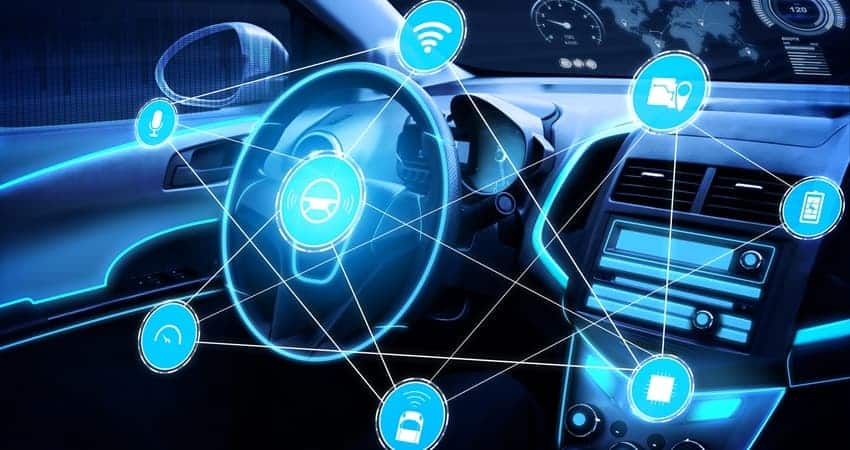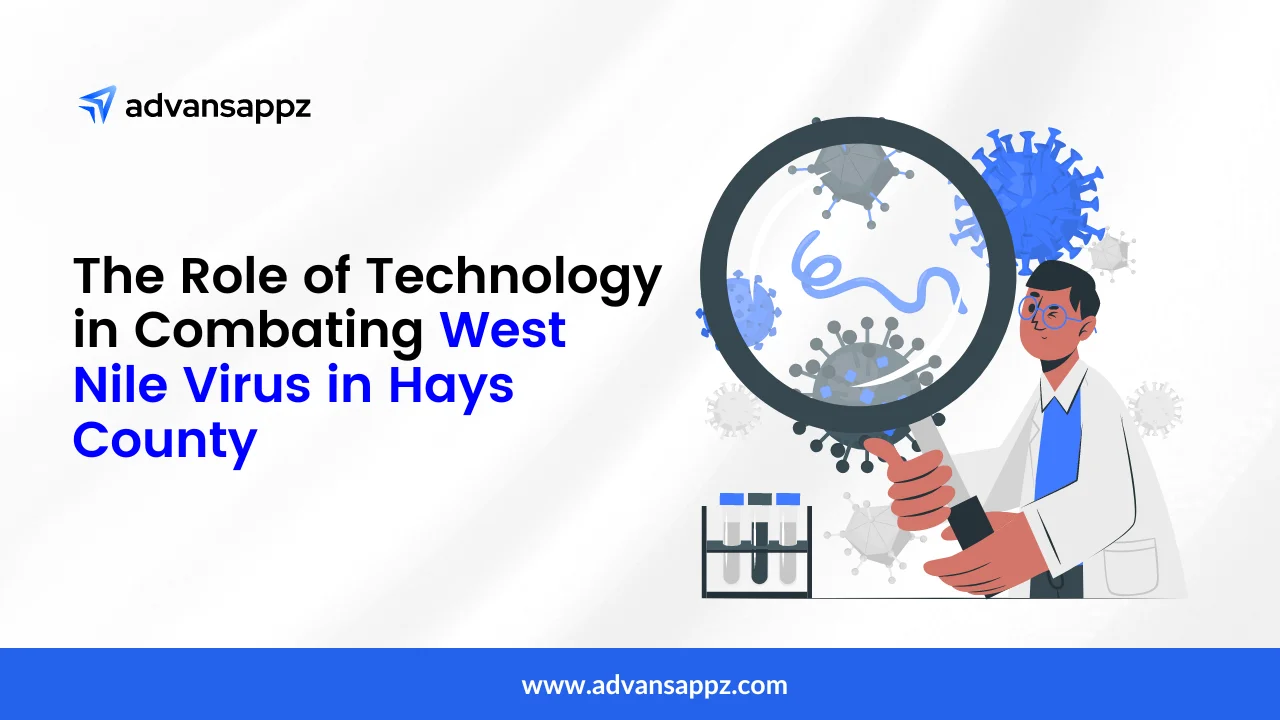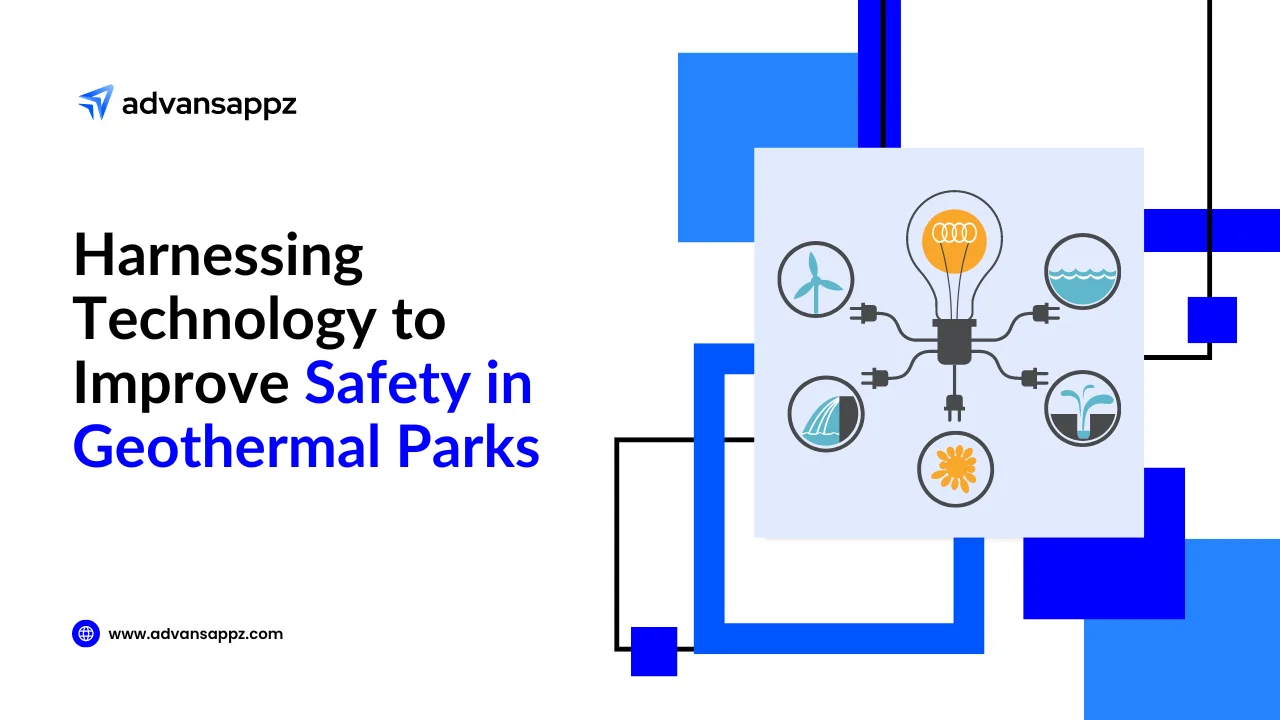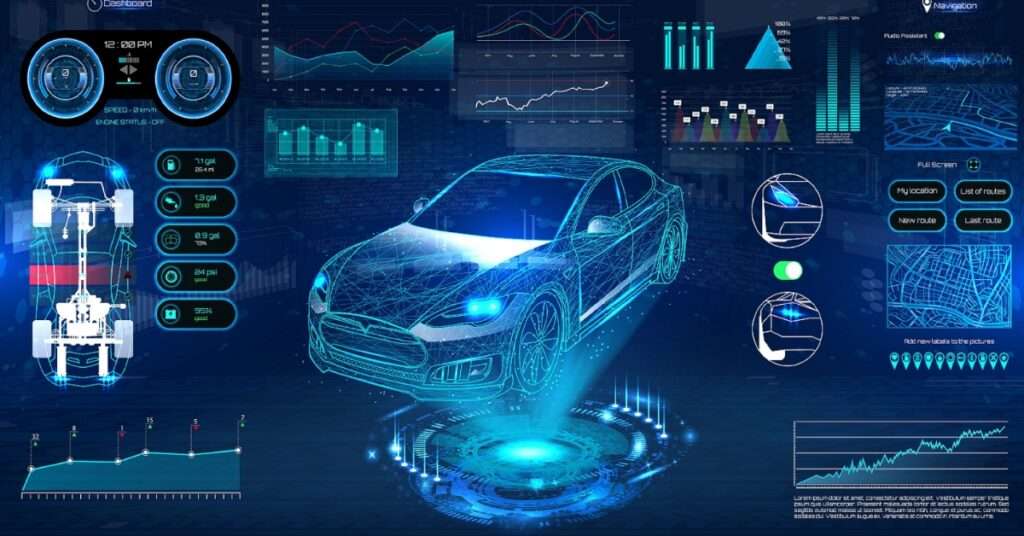
The Internet of Things (IoT) has brought immense changes in our lives and work. It has transformed many industries, and the automotive sector is no exception. As a result, the global Automotive IoT market is expected to reach $541.73 billion by 2025, at a CAGR of 16.4% from 2019 to 2025.
With the increasing demand for connected cars and the adoption of autonomous vehicles, IoT technology has become an essential part of the automotive sector. It is estimated that the number of connected vehicles on the road will increase from 330 million in 2020 to over 775 million by 2025.
IoT devices have been integrated into cars to improve the driver and passengers’ safety, comfort, and convenience. In this blog, we will discuss the most common applications of IoT in the automotive industry and its benefits.
Why is IoT in automotive so Popular?

The use of IoT in automotive industry has gained immense popularity due to its ability to wirelessly connect various devices and systems, enabling data exchange and control. Here are some reasons why IoT has become increasingly popular:
- Automation: IoT in automotive enables the automation of various tasks, reducing the need for human intervention. For instance, IoT devices can automatically adjust the temperature and lighting inside a car based on the passengers’ preferences.
- Communication: IoT allows seamless communication between various devices, such as a car’s infotainment system and a passenger’s smartphone. This leads to better connectivity and enhances the overall driving experience.
- Monitoring: IoT devices can monitor various aspects of a car’s performance, such as fuel consumption and tire pressure. This enables early detection of potential issues, reducing maintenance costs and downtime.
- Data Analysis: With the help of IoT, it gets easier to generate vast amounts of data, which can be analyzed to gain insights into customer behavior, product performance, and other vital metrics. This data can be used to make informed decisions and improve processes.
Benefits of Using IoT in the Automotive Industry
The automotive industry has also embraced IoT to improve vehicle safety, enhance the driving experience, and reduce costs.
- Vehicle Safety: IoT devices such as sensors and cameras can be used to monitor the road and alert drivers to potential hazards. Autonomous vehicle technology uses various IoT devices and sensors to navigate and make decisions without human intervention.
- Driving Experience: Infotainment systems are IoT devices that provide passengers with entertainment, navigation, and communication options. Telematics devices collect and transmit data on vehicle performance, which can be used to optimize routes, reduce fuel consumption, and improve maintenance schedules.
- Cost Reduction: IoT devices can optimize routes, reduce fuel consumption, and improve maintenance schedules, leading to increased efficiency and reduced costs. IoT devices can monitor vehicle performance and alert drivers to potential issues, reducing downtime and improving productivity.
Applications of IoT in Automotives
The automotive industry has adopted IoT technology to enhance the driving experience, improve safety, and reduce costs.
Here are some of the applications of IoT in the automotive sector
1. Telematics
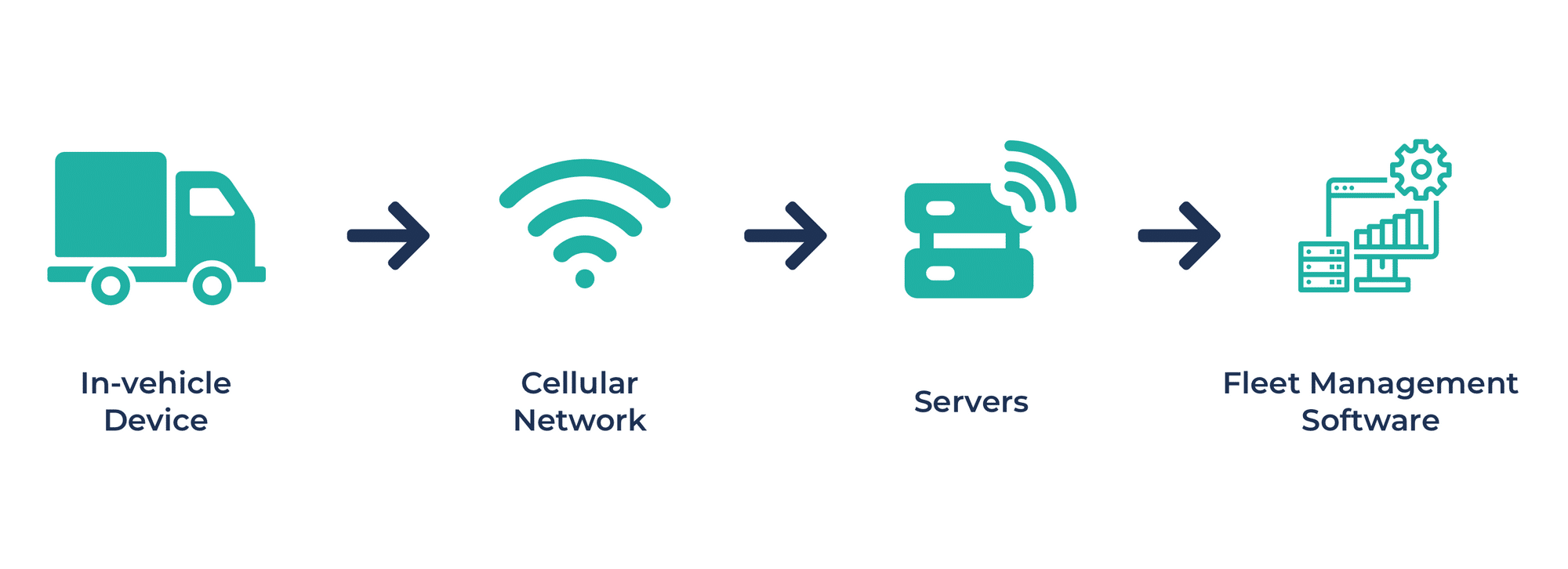
Telematics is a technology that combines telecommunications and informatics to provide real-time data on a vehicle’s performance. IoT car devices can collect and transmit data on fuel consumption, speed, distance traveled, and engine health. This data can be used to improve maintenance schedules, reduce fuel consumption, and optimize routes.
For example, a trucking company can use telematics devices to track the location and performance of its fleet in real-time, allowing them to optimize routes, reduce fuel consumption, and improve delivery times.
2. IoT Autonomous Vehicles
These vehicles are equipped with a range of sensors and IoT devices that enable them to navigate and make decisions without human intervention. The technology can reduce accidents, improve traffic flow, and increase fuel efficiency.
For example, Waymo, a subsidiary of Alphabet, is developing autonomous vehicle technology that uses a range of IoT devices and sensors to navigate and make decisions without human intervention. The technology is currently being tested in Phoenix, Arizona, and is expected to revolutionize the transportation industry.
3. Infotainment Systems
IoT can be integrated into infotainment systems to provide passengers with entertainment, navigation, and communication options. These devices can connect to smartphones and other devices to provide a personalized experience.
For example, Tesla’s infotainment system uses a range of IoT devices and sensors to give passengers entertainment, navigation, and communication options. The system can be voice-activated, allowing passengers to control various car features without taking their hands off the wheel.
4. Safety Systems
Integrating IoT devices with automotive can enhance car safety systems, such as collision avoidance systems and lane departure warning systems. It allows the collection and analysis of sensor data to detect potential threats and alert the driver to take action.
5. Fleet Management
IoT is now being used to manage fleets of vehicles by tracking their location, fuel consumption, and maintenance schedules. This information can be used to optimize routes, reduce fuel consumption, and improve maintenance schedules.
For example, UPS uses IoT devices to manage its fleet of delivery trucks. The devices track the location and performance of the trucks in real time, allowing the company to optimize delivery routes, reduce fuel consumption, and improve customer satisfaction.
To make the most use of IoT in the automotive industry, here are some devices used for analysis, connectivity, and better safety for drivers.
- Sensors: Sensors can collect data on vehicle performance, including speed, fuel consumption, and engine health.
- Connectivity Modules: Connectivity modules enable data exchange between devices and systems, allowing real-time monitoring and control.
- Infotainment Systems: Infotainment systems provide passengers with entertainment, navigation, and communication options.
- Autonomous Vehicle Technology: Autonomous vehicle technology relies heavily on the integration of IoT devices in automotive, such as sensors and connectivity modules, to navigate and make decisions without human intervention.
Challenges and Considerations for IoT Implementation
When it comes to implementing the Internet of Things (IoT), several challenges and considerations need to be addressed. Here are some statistics that highlight these challenges:
Data Security and Privacy:
- According to a study by Gemalto, 48% of organizations identified security and privacy as the biggest challenges in IoT implementation.
- Another survey by PwC revealed that 69% of executives considered IoT security a significant concern.
- The Ponemon Institute reported that 80% of organizations experienced an IoT-related security breach in the past year.
Standardization and Interoperability:
- A study conducted by McKinsey found that a lack of IoT standards and interoperability was a top concern for 40% of executives.
- According to the International Data Corporation (IDC), 60% of IoT deployments faced issues related to integration and compatibility.
Connectivity and Infrastructure:
- A survey by Vodafone showed that 75% of IoT adopters struggled with connectivity-related challenges.
- The World Economic Forum reported that around 40% of the global population needs access to reliable internet connectivity, posing a hurdle for IoT implementation.
Regulatory Compliance:
- The Business Performance Innovation (BPI) Network revealed that 54% of executives considered regulatory issues a significant challenge in IoT deployment.
- The General Data Protection Regulation (GDPR) has added complexities in handling IoT data, with 58% of organizations being concerned about meeting compliance requirements, as per a study by Cisco.
Case Studies of IoT-Driven Innovation in the Automotive Industry
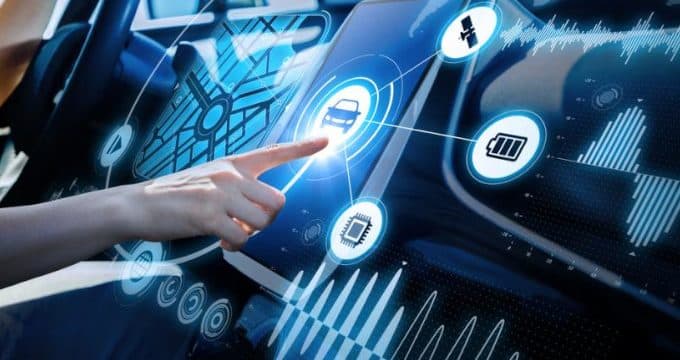
Tesla:
- Tesla is a prominent example of IoT-driven innovation in the automotive industry. Their electric vehicles (EVs) are equipped with IoT technology, enabling various functionalities:
- Over-the-Air Updates: Tesla uses IoT connectivity to provide software updates remotely, enhancing vehicle performance, adding new features, and addressing security vulnerabilities. As of 2020, Tesla had deployed over 1 million updates to its vehicles.
- Autonomous Driving Capabilities: Tesla’s Autopilot system utilizes IoT sensors and connectivity to enable advanced driver-assistance features, such as lane keeping, adaptive cruise control, and self-parking. Tesla’s fleet has accumulated over 4 billion miles of data for refining and improving autonomous driving capabilities.
BMW:
- BMW has embraced IoT technology to enhance safety, infotainment, and remote vehicle control through its ConnectedDrive system:
- Safety and Security: BMW’s IoT-enabled features include automatic emergency calling in case of an accident, stolen vehicle tracking, and remote locking/unlocking functionality.
- Infotainment and Connectivity: ConnectedDrive provides real-time traffic information, weather updates, and seamless smartphone integration for hands-free calling, music streaming, and navigation services.
- Remote Vehicle Control: BMW owners can use IoT connectivity to check vehicle status, lock/unlock doors, and pre-condition the car’s temperature using a mobile app.
Toyota:
- Toyota has implemented IoT initiatives to drive innovation across various aspects of its vehicles:
- Predictive Maintenance: Through IoT sensors and connectivity, Toyota collects data on vehicle performance, engine diagnostics, and parts’ health to predict maintenance needs and proactively address potential issues. This approach helps optimize vehicle reliability and reduce downtime.
- Fuel Efficiency Optimization: Toyota’s IoT-enabled systems monitor fuel consumption, engine efficiency, and driver behavior to provide feedback and recommendations for improving fuel efficiency. This data-driven approach contributes to environmental sustainability and cost savings for vehicle owners.
- Smart Traffic Management: Toyota is leveraging IoT technology to improve traffic flow and reduce congestion. By collecting real-time data from connected vehicles and integrating it with traffic management systems, Toyota aims to optimize traffic signal timing and provide route guidance to drivers for smoother journeys.
Also check: Top 5 Emerging Technologies for Startups in 2023
Final Words
Integrating IoT into automotive industry has revolutionized how we drive, maintain, and manage vehicles. With its ability to wirelessly connect various devices and systems, IoT in automotive has enabled the collection and exchange of real-time data in vehicles, leading to increased efficiency, improved safety, and reduced costs. The benefits of IoT in automotive are immense, and it’s clear that the technology is here to stay.
As a leading technology provider in the automotive industry, Advansappz is at the forefront of IoT integration, providing cutting-edge solutions that enable clients to optimize their operations, enhance the driving experience, and improve safety. With their expertise and innovative solutions, they are committed to driving the industry forward and shaping the future of mobility.
Frequently Asked Questions
In the automotive industry, the Internet of Things (IoT) can be used in various ways to enhance vehicle functionality, improve safety, and enable innovative services. Here are some key applications of IoT in the automotive industry:
-
Connected Vehicles: IoT enables vehicles to be connected to the internet, allowing real-time data exchange between vehicles, infrastructure, and other devices. This connectivity enables features such as remote diagnostics, software updates, vehicle tracking, and predictive maintenance.
-
Telematics and Fleet Management: IoT-based telematics systems enable tracking and monitoring of vehicles, providing valuable insights into vehicle performance, driver behavior, fuel efficiency, and maintenance needs. Fleet management solutions utilize IoT to optimize logistics, route planning, and asset tracking, leading to improved efficiency and cost savings.
-
Vehicle Safety and Driver Assistance: IoT enables advanced driver assistance systems (ADAS) by connecting vehicles to sensors, cameras, and infrastructure. These systems provide features such as collision avoidance, lane departure warnings, adaptive cruise control, and automatic emergency braking, enhancing vehicle safety.
-
Smart Infotainment and Connectivity: IoT integration allows for connected infotainment systems in vehicles, providing features such as voice-activated controls, real-time traffic information, personalized content streaming, and integration with smart devices. This enhances the in-car entertainment experience and connectivity options for occupants.
-
Vehicle-to-Vehicle (V2V) Communication: IoT enables V2V communication, allowing vehicles to exchange information with nearby vehicles. This technology enables features like cooperative collision warning, traffic flow optimization, and coordinated driving, contributing to safer and more efficient road transportation.
-
Enhanced Customer Experience: IoT can improve the overall customer experience by enabling features such as remote vehicle control through mobile apps, personalized in-car settings, integration with smart home devices, and seamless connectivity with wearable devices.
-
Predictive Analytics and Maintenance: IoT sensors embedded in vehicles collect real-time data on various parameters, enabling predictive analytics for maintenance needs. This helps in proactive maintenance scheduling, identifying potential issues before they become critical, and reducing unplanned downtime.
-
Insurance and Usage-Based Services: IoT-based telematics systems allow insurance companies to offer usage-based insurance plans. Vehicle data collected through IoT sensors can be used to determine insurance premiums based on actual driving behavior and usage patterns, promoting safer driving practices.
These are just a few examples of how IoT is transforming the automotive industry. IoT technology has the potential to revolutionize vehicle capabilities, improve safety, optimize operations, and enhance the overall driving experience for consumers.
The automotive industry is utilizing IoT (Internet of Things) to increase productivity in several ways:
-
Predictive Maintenance: IoT sensors installed in vehicles and production equipment collect real-time data on their performance and condition. This data is analyzed to detect potential issues and schedule maintenance proactively, reducing unplanned downtime and improving overall productivity.
-
Supply Chain Optimization: IoT sensors enable real-time tracking and monitoring of inventory, parts, and components throughout the supply chain. This allows automotive manufacturers to optimize inventory levels, reduce stockouts, improve production planning, and ensure timely delivery of materials, resulting in increased productivity and cost savings.
-
Smart Manufacturing: IoT devices and connectivity enable the implementation of smart manufacturing processes. Connected machines and production lines can communicate and share data, optimizing production flow, reducing bottlenecks, and improving overall efficiency. Real-time data analytics and automation further enhance productivity by streamlining operations and reducing manual intervention.
-
Remote Monitoring and Control: IoT technology enables remote monitoring and control of manufacturing operations and equipment. Automotive manufacturers can remotely access and monitor production lines, machinery, and even entire factories. This capability allows for quick identification of issues, remote troubleshooting, and efficient allocation of resources, leading to improved productivity.
-
Worker Safety and Efficiency: IoT devices such as wearables and connected tools enhance worker safety and efficiency. IoT-enabled safety equipment can alert workers to potential hazards or provide real-time monitoring of their health and well-being. Connected tools can streamline assembly processes and provide real-time guidance, reducing errors and improving worker productivity.
-
Vehicle Telematics: IoT-enabled telematics systems in vehicles allow automotive manufacturers to gather data on vehicle performance, usage patterns, and driver behavior. This data can be analyzed to optimize vehicle design, improve fuel efficiency, enhance driver safety, and provide insights for future product development.
-
Connected Cars and Services: IoT connectivity in cars enables automakers to provide connected services such as remote diagnostics, over-the-air updates, and personalized infotainment features. These services improve the customer experience and enable manufacturers to gather valuable data for product improvements, marketing, and customer insights.
By leveraging IoT technology, the automotive industry can achieve increased productivity through improved maintenance practices, optimized supply chain operations, smart manufacturing processes, remote monitoring and control, worker efficiency and safety, vehicle telematics, and connected car services. These IoT-driven initiatives contribute to streamlined operations, reduced costs, enhanced customer satisfaction, and overall productivity gains in the automotive sector.
Innovation is implemented in the automobile industry through various methods:
-
Research and Development (R&D): Automobile manufacturers invest heavily in R&D to develop new technologies, materials, and designs. R&D efforts focus on areas such as electric vehicles (EVs), autonomous driving, connectivity, and advanced safety features. These innovations help improve performance, efficiency, safety, and user experience.
-
Collaboration and Partnerships: Automobile manufacturers collaborate with technology companies, startups, and research institutions to leverage their expertise and capabilities. Collaborative efforts involve sharing knowledge, conducting joint research, and developing innovative solutions. Partnerships also allow for the integration of new technologies and ideas into vehicles and manufacturing processes.
-
Advanced Manufacturing Technologies: Innovations in manufacturing processes, such as automation, robotics, and data analytics, enhance efficiency, precision, and flexibility. Technologies like 3D printing, machine learning, and artificial intelligence are used to optimize production, reduce costs, and accelerate time-to-market for new vehicle models.
-
Connected and Electric Vehicles: The automotive industry is embracing connected vehicle technologies, enabling features like real-time diagnostics, over-the-air updates, and enhanced infotainment systems. Electric vehicles (EVs) are also a major area of innovation, with manufacturers developing advanced battery technologies, charging infrastructure, and range optimization solutions.
-
Advanced Safety Systems: Innovations in safety systems aim to reduce accidents and enhance occupant protection. Features like advanced driver assistance systems (ADAS), collision avoidance technologies, and pedestrian detection systems utilize sensors, cameras, and AI algorithms to improve safety on the road.
-
Mobility Services and Sharing Economy: The rise of ride-sharing platforms and the concept of mobility as a service (MaaS) has sparked innovation in the automotive industry. Manufacturers are exploring new business models, investing in shared mobility platforms, and developing electric and autonomous vehicles for ride-hailing and car-sharing services.
-
User Experience and Connectivity: Innovation in user experience involves creating seamless, intuitive, and personalized interfaces for vehicle control and infotainment. Integration with smartphones, voice recognition, and intelligent assistants enhance connectivity and provide a more engaging driving experience.
-
Sustainability and Environmental Initiatives: Innovation in the automotive industry focuses on reducing the environmental impact of vehicles. This includes developing hybrid and electric powertrains, lightweight materials, and improving fuel efficiency. Manufacturers are also investing in sustainable manufacturing practices and exploring alternative energy sources.
By implementing these innovations, the automotive industry aims to meet evolving customer demands, comply with stricter regulations, and drive sustainable growth. These innovations improve vehicle performance, safety, connectivity, and environmental sustainability while shaping the future of mobility.
Innovation in the automotive industry refers to the development and application of new ideas, technologies, and processes to improve and transform various aspects of the industry. This includes advancements in vehicle design, manufacturing, safety features, propulsion systems, connectivity, autonomous driving, and mobility solutions. Innovation drives the creation of more efficient, sustainable, and technologically advanced vehicles, as well as the development of new business models and services within the automotive ecosystem. It encompasses areas such as electric vehicles, hybrid technologies, smart mobility, digitalization, and the integration of emerging technologies like artificial intelligence, Internet of Things (IoT), and blockchain. Overall, innovation in the automotive industry aims to enhance customer experience, optimize performance, increase safety, reduce environmental impact, and shape the future of transportation.
Several factors drive innovation across various industries, including the automotive industry. Some key drivers of innovation include:
-
Technological Advancements: Advances in technology, such as artificial intelligence, Internet of Things, robotics, and advanced materials, provide new opportunities for innovation. These technologies enable the development of new products, services, and processes that enhance performance, efficiency, and user experiences.
-
Changing Customer Needs and Expectations: Customer demands and preferences evolve over time, pushing companies to innovate to meet their changing needs. By understanding customer requirements and feedback, companies can develop innovative solutions that address pain points, improve convenience, and provide better value.
-
Competitive Pressure: Competition within the industry drives companies to innovate in order to gain a competitive edge. Businesses strive to differentiate themselves through innovative products, services, and business models that offer unique features, improved performance, or cost advantages.
-
Regulatory and Environmental Factors: Government regulations and environmental concerns play a significant role in driving innovation. Regulations related to emissions, fuel efficiency, and safety standards push automakers to develop cleaner, greener, and safer vehicles. These regulations create a need for technological advancements and drive innovation in areas such as electric vehicles and autonomous driving.
-
Industry Collaboration and Partnerships: Collaboration among industry players, including automakers, suppliers, and technology companies, can foster innovation. Partnerships allow for the pooling of resources, expertise, and knowledge to develop innovative solutions that address complex challenges and accelerate technological advancements.
-
Globalization and Market Expansion: Globalization opens up new markets and customer segments, creating opportunities for innovation. Companies often adapt their products and services to cater to the specific needs and preferences of different markets, driving innovation in areas such as localization, customization, and international business models.
-
Cost Reduction and Efficiency Improvement: Innovations that drive cost reduction, process optimization, and operational efficiency are key drivers in many industries. Companies strive to develop innovative solutions that streamline operations, reduce waste, and improve productivity to achieve a competitive advantage.
-
Societal and Cultural Changes: Societal and cultural changes, including shifts in lifestyles, values, and demographics, influence the demand for innovative products and services. Innovations that align with changing social trends, sustainability, and convenience can gain traction in the market.
These drivers of innovation interact and influence each other, shaping the direction and pace of innovation in the automotive industry and beyond. Embracing and responding to these drivers enable companies to stay ahead, meet evolving market demands, and drive progress within the industry.
